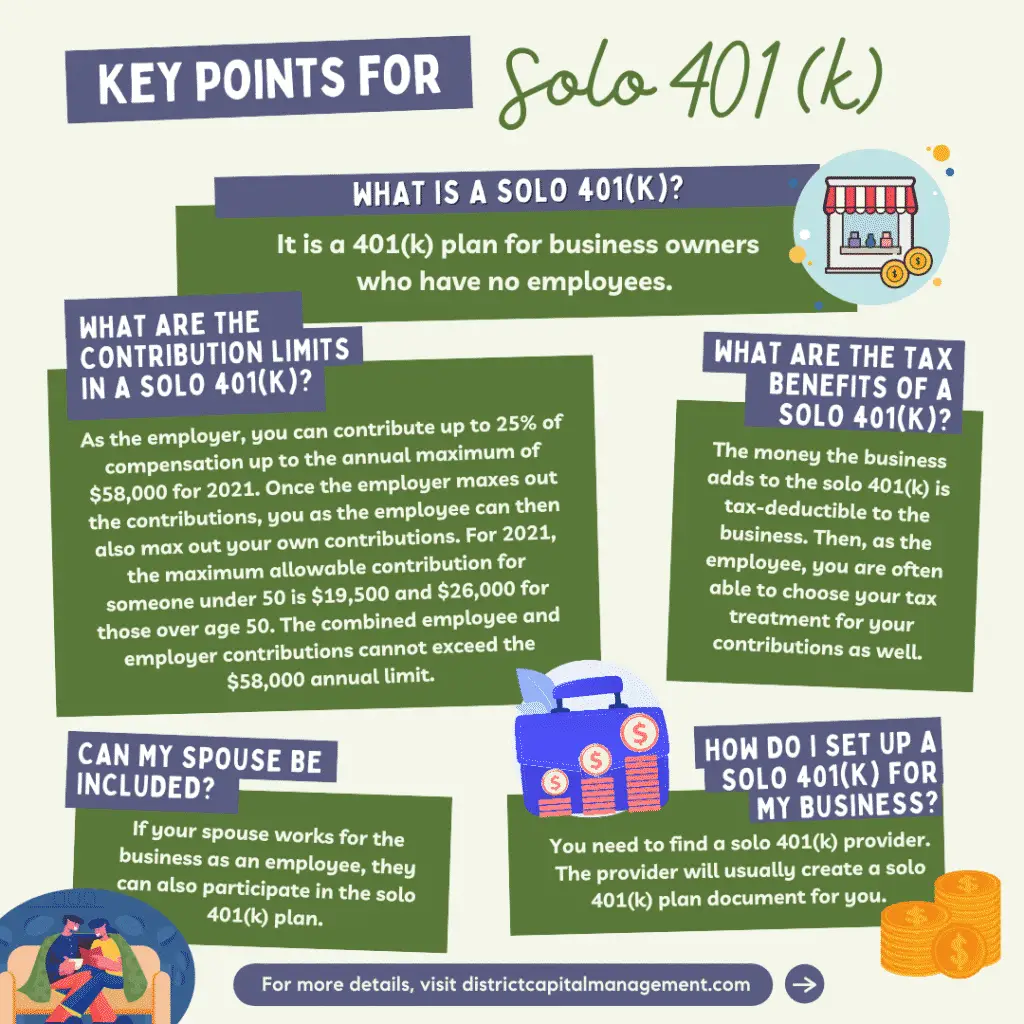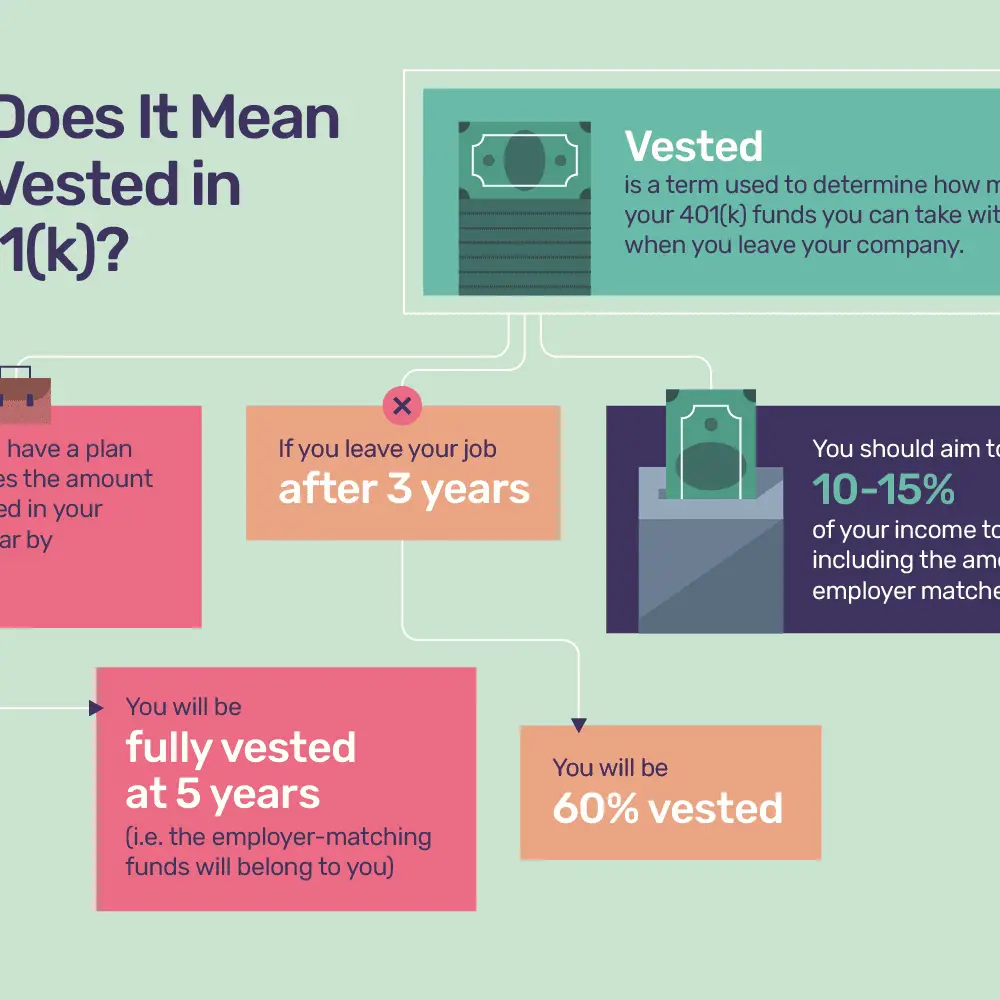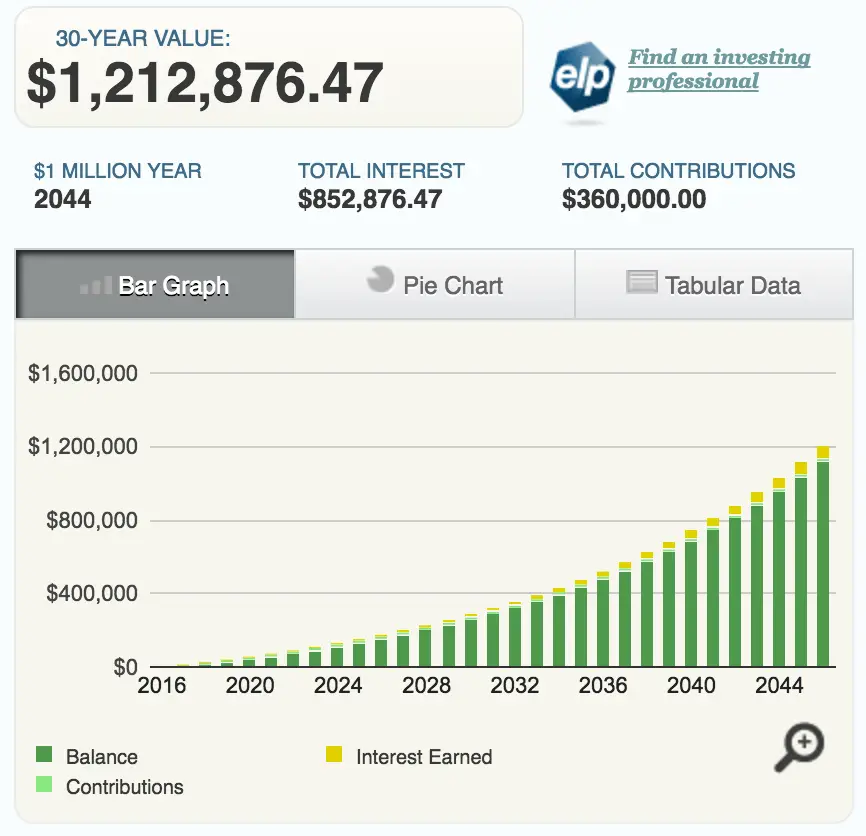Withdrawals After Age 72
Many people continue to work well past age 59 1/2. They delay their 401 withdrawals, allowing the assets to continue to grow tax-deferred, but the IRS requires that you begin to take withdrawals known as “required minimum distributions” by age 72.
Those who are owners of 5% or more of a business can defer taking their RMDs while they’re still working, but the plan must have made this election. This only applies to the 401 of your current employer. RMDs for all other retirement accounts still must be taken.
Convert To An Ira To Keep Contributing
You cannot contribute to a 401 after you leave your job, so if you want to continue adding money to your retirement funds, youll need to roll over your account into an IRA. Previously, you could contribute to a Roth IRA indefinitely but could not contribute to a traditional IRA after age 70½. However, under the new Setting Every Community Up for Retirement Enhancement Act, you can now contribute to a traditional IRA for as long as you like.
Keep in mind that you can only contribute earned income, not gross income, to either type of IRA, so this strategy will only work if you have not retired completely and still earn taxable compensation, such as wages, salaries, commissions, tips, bonuses, or net income from self-employment, as the IRS puts it. You cant contribute money earned from either investments or your Social Security check, though certain types of alimony payments may qualify.
To execute a rollover of your 401, you can ask your plan administrator to distribute your savings directly to a new or existing IRA. Alternatively, you can elect to take the distribution yourself. However, in this case, you must deposit the funds into your IRA within 60 days to avoid paying taxes on the income.
Traditional 401 accounts can be rolled over into either a traditional IRA or a Roth IRA, whereas designated Roth 401 accounts must be rolled over into a Roth IRA.
Roll Money Into An Ira
If you are not satisfied with the 401 investment options, you can rollover the money into an IRA since the latter has more investment options and offers greater control. You can reallocate your portfolio of investments to help you grow your investments further in years to come.
If you have a string of old 401s when you retire, you should consolidate them into an IRA for better management of your retirement savings. Also, you can reduce the administration fees of your retirement money, and even qualify for discounts on sales charges.
Don’t Miss: Can I Transfer Money From My 401k To An Ira
The 401 Withdrawal Rules For People Between 55 And 59
Most of the time, anyone who withdraws from their 401 before they reach 59 ½ will have to pay a 10% penalty as well as their regular income tax. However, you can withdraw your savings without a penalty at age 55 in some circumstances. You cannot be a current employee of the company that runs the 401, and you must have left that employer during or after the calendar year in which you turned 55. Many people call this the Rule of 55.
If youre between 55 and 59 ½ years old and you are considering a 401k withdrawal from an old employer, you should keep a few things in mind. For starters, doesnt matter why your employment stopped. Whether you quit, you were fired, or you were laid off, you can qualify for a penalty-free withdrawal. However, you need to meet the age requirement and your employment must end in the calendar year you turn 55 or later.
These rules for early 401 withdrawal only apply to assets in 401 plans maintained by former employers. The rules dont apply if youre still working for your employer. For example, an employee of Washington and Sons usually wont be able to make a penalty-free withdrawal before they turn 59 ½. However, the same employee can make a withdrawal from a former employers 401 account and avoid the penalty when he or she turns 55.
When You Leave A Job

When you leave a job, you generally have the option to:
- Leave your 401 with your current employer
- Roll over the funds to an IRA
- Roll over the funds to your new employer’s 401.
If you choose any of those options, you will not owe taxes or a 10% penalty. You can also take this money as a distribution, but this will trigger early withdrawal penalties if you are under 59 1/2 .
Recommended Reading: How To See My 401k Balance
Two Situations When It Might Be An Ok To Take Out A 401k Loan Include:
- An instance when you need access to cash for something like a medical emergency but cannot get a good interest rate on a loan due to your credit score
- You need to pay off high interest debt
But If You Leave Your Job Prematurely, You May Need To Pay Back the Whole Loan!
Under the new Tax Cuts and Jobs Act of 2017, you have until the filing deadline of your tax return to pay it off and avoid the consequences of an early distribution for any unpaid balance.
The 4% Withdrawal Rule
The 4% rule says that you can withdraw 4% of your savings in the first year, and calculate subsequent yearâs withdrawals on the rate of inflation. This rule is based on the idea that you should withdraw 4% annually, and maintain the financial security in retirement for 30 years. This strategy is preferred because it is simple to compute, and gives retirees a predictable amount of income every year.
For example, if you have $1 million in retirement savings, 4% equals $40,000 in the first year. If the inflation rises by 2.5% in the second year, you should take out an additional 2.5% of the first yearâs withdrawal i.e. $1000. Therefore, the withdrawal for the second year will be $41,000.
You May Like: Can You Borrow From Your 401k Twice
How Much Tax Do I Pay On An Early 401 Withdrawal
The money will be taxed as regular income. That’s between 10% and 37% depending on your total taxable income.
In most cases, that money will be due for the tax year in which you take the distribution.
The exception is for withdrawals taken for expenses related to the coronavirus pandemic. In response to the coronavirus pandemic, account owners have been given three years to pay the taxes they owe on distributions taken for economic hardships related to COVID-19.
Periodic Distributions From 401
Instead of cashing out the entire 401, you may choose to receive regular distributions of income from your 401. Usually, you can choose to receive monthly or quarterly distributions, especially if inflation increases your living expenses. If the 401 is your main source of income, you should budget properly so that the distributions are enough to meet your expenses.
For example, if you have accumulated $1 million in retirement savings, you can choose to receive $3,330 every month, which amounts to approximately $40,000 annually. You can adjust the amount once a year or every few months if your 401 plan allows it. This option allows the remaining savings to continue growing over time as you take periodic distributions.
Also Check: Are Part Time Employees Eligible For 401k
Withdrawing Funds From A 401 At 55
The rule of 55 allows 401 participants to withdraw money from the retirement plan penalty-free at age 55. The IRS requires that an employee must have left their employer, either by being laid off, fired, or simply quitting, in the calendar year they turn 55 to get a penalty-free distribution. If you lost your job at 54, you do not qualify to withdraw money tax-free from the 401 when you attain age 55.
The Rule of 55 does not apply to the old 401s left with former employers it only applies to the current 401 with your current employer. If you still have money in the old 401s of a former employer, and you were not yet 55 when you left, the rule of 55 does not apply. You will have to wait until you are 59 ½ to start taking withdrawals from the old 401s without paying a penalty tax. Still, you can roll over the old 401s into your current 401 before you are 55 so that you can take a distribution penalty-free.
Withdrawals After Age 59 1/2
Age 59 1/2 is the magic number when it comes to avoiding the penalties associated with early 401 withdrawals. You can take penalty-free withdrawals from 401 assets that have been rolled over into a traditional IRA when you’ve reached this age. You can also take a penalty-free withdrawal if your funds are still in the 401 plan, and you’ve retired.
You can take a withdrawal penalty-free if you’re still working after you reach age 59 1/2, but the rules change a bit. Check with the plan administrator about its specific rules if you’re still working at the company with which you have your 401 assets.
Your plan might offer an “in-service” withdrawal that allows you to access your 401 assets penalty-free, but not all plans offer this option. And remember, the withdrawal will still be subject to income taxes, even if it’s not penalized.
Also Check: How To Switch 401k To Ira
Don’t Let Tax Penalties Eat Away At Your Savings
While it may be annoying to take money out of your retirement accounts on the government’s schedule instead of your own, you can’t afford to miss a required minimum distribution and end up owing a huge tax penalty. Fortunately, now you know when RMDs begin, so you can make sure to comply and keep your hard-earned money to spend on your wants and needs as a retiree.
Of course, if you’re forced to take money out that you don’t need to spend, you also have the option to put the cash into a regular investment account or high-yield savings account to watch the money keep growing or to save it for a rainy day.
The Motley Fool has a disclosure policy.
What If I Withdraw Too Little Or Dont Take An Rmd

If you dont make a proper RMD by the appropriate deadline, Uncle Sam will tax you 50% of the difference between the amount you withdrew that year and the amount you were supposed to take out that year.
However, you dont have to take your RMD in one lump sum. You can take it in increments throughout the year. Just make sure you withdraw the total RMD amount for the year by December 31. In some cases, however, you can delay RMDs.
Read Also: Where Can I Find My 401k Balance
Also Check: How To Withdraw My 401k
Other Alternatives To A 401 Loan
Borrowing from yourself may be a simple option, but its probably not your only option. Here are a few other places to find money.
Use your savings. Your emergency cash or other savings can be crucial right now and why you have emergency savings in the first place. Always try to find the best rate on a high-yield savings account so that youre earning the highest amount on your funds.
Take out a personal loan. Personal loan terms could be easier for you to repay without having to jeopardize your retirement funds. Depending on your lender, you can get your money within a day or so. 401 loans might not be as immediate.
Try a HELOC. A home equity line of credit, or HELOC, is a good option if you own your home and have enough equity to borrow against. You can take out what you need, when you need it, up to the limit youre approved for. As revolving credit, its similar to a credit card and the cash is there when you need it.
Get a home equity loan. This type of loan can usually get you a lower interest rate, but keep in mind that your home is used as collateral. This is an installment loan, not revolving credit like a HELOC, so its good if you know exactly how much you need and what it will be used for. While easier to get, make sure you can pay this loan back or risk going into default on your home.
Dont Miss: How To Move 401k From One Company To Another
Ira Rollover Bridge Loan
There is one final way to borrow from your 401k or IRA on a short-term basis. You can roll it over into a different IRA. You are allowed to do this once in a 12-month period.
When you roll an account over, the money is not due into the new retirement account for 60 days. During that period, you can do whatever you want with the cash.
However, if its not safely deposited in an IRA when time is up, the IRS will consider it an early distribution. You will be subject to penalties in the full amount.
This is a risky move and is not generally recommended. However, if you want an interest-free bridge loan and are sure you can pay it back, its an option.
Read More: 7 Essential Steps for Retirement Planning
Don’t Miss: How Much Do I Need In My 401k To Retire
Taking A 401k Loan Might Not Be Such A Good Idea
A 401K is supposed to help you have money in retirement. When you temporarily take money out of the plan, it inhibits its ability to compound with interest or stock market growth. You may end up with less money in retirement than if you had left the money in your 401K. In addition, if you terminate your employment, youll owe a 10% penalty and income taxes on the balance unless you can pay the loan back right away. 401K loans may also have fees and the payment terms are often very inflexible. Finally, taking a 401K loan may be a sign of broader financial distress.
What Will Happen To My 401k If I Quit My Job
It can be tempting to withdraw all the money in your 401 plan each time you change jobs, but this is generally a poor financial decision. Withdrawals from 401s before age 55 are typically subject to income tax and a 10% early withdrawal penalty, which will easily eliminate a large chunk of your savings.
You May Like: What Is A Pension Vs 401k
Early 401 And Ira Withdrawals For Expats
If you choose to withdrawal funds from an IRA or 401 before your funds have matured you will pay a tax on itregardless of if youre living in the U.S. or outside of it.
First, the IRS may withhold income taxes on an early 401 withdrawal. For example, lets say your income tax is 24%. If you withdraw $50,000 at age 45, the IRS may withhold $12,000 of it, leaving you with only $38,000.
Second, you may be penalized 10% of the withdrawn amount, subtracting another chunk of your total.
There are exceptions to the 10% penalty, including withdrawals for hardships, disabilities, and other unprecedented situations . Because these exceptions are highly complex, we recommend you speak with a financial advisor before attempting any sort of early 401 or IRA withdrawal while overseas.
Consider Converting Your 401 To An Ira
Individual retirement accounts have slightly different withdrawal rules from 401s. So, you might be able to avoid that 10% 401 early withdrawal penalty by converting your 401 to an IRA first. s and IRAs, of course.) For example:
-
Theres no mandatory withholding on IRA withdrawals. That means you might be able to choose to have no income tax withheld and thus get a bigger check now. You still have to pay the tax when you file your return, though. So if youre in a desperate situation, rolling the money into an IRA and then taking the full amount out of the IRA might be a way to get 100% of the distribution. This strategy may be valuable for people in low tax brackets or who know theyre getting refunds.
Read Also: How To Transfer 401k To Ira Fidelity
There Are Some Situations In Which It Can Be Advisable To Take An Early 401k Withdrawal
- It may be beneficial to cash out a portion of your 401K if you have a loan that has very high interest. For example, taking an early distribution on your 401K be wise to pay down credit card or personal loan with a very high interest rate. In this case, you may be financially better off cashing out the 401K and paying the penalty than continuing to pay that interest. However, it is important to do the math to determine whether its better to cash out a portion of the 401K or not
How Much State Tax Do I Pay On 401k Withdrawal

Because payments received from your 401 account are considered income and taxed at the federal level, you must also pay state income taxes on the funds. The only exception occurs in states without an income tax. Your 401 plan may offer you the opportunity to have taxes automatically withheld from a withdrawal.
Recommended Reading: Can I Borrow From My 401k Without Penalty
Impact Of A 401 Loan Vs Hardship Withdrawal
A 401participant with a $38,000 account balance who borrows $15,000 will have $23,000 left in their account. If that same participant takes a hardship withdrawal for $15,000 instead, they would have to take out $23,810 to cover taxes and penalties, leaving only $14,190 in their account, according to a scenario developed by 401 plan sponsor Fidelity. Also, due to the time value of money and the loss of compounding opportunities, taking out $23,810 now could result in tens of thousands less at retirement, maybe even hundreds of thousands, depending on how long you could let the money compound.